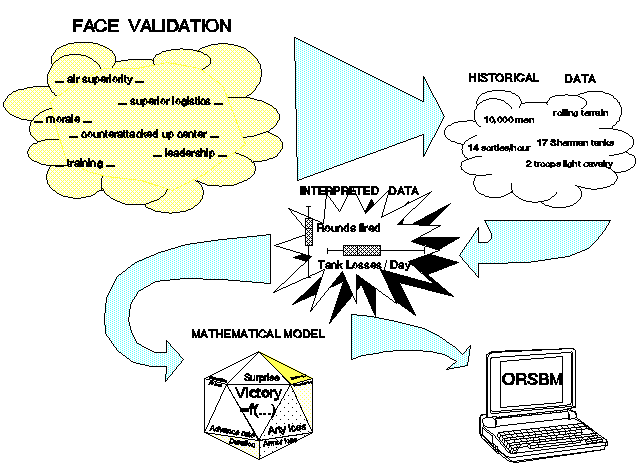
| Project Metadata | Keywords | ||||||||||||||||||||||||||||||||||||||||||||||||||||||||||||||||||||||||||||||||||||||||||||||||||||||||||||||||||||||||||||||||||||||||||||||||||||
|
|
Challenge: War is an unpleasant fact of life, to be avoided when possible; however, if the U.S. must fight, it should win. It is critical to know how scarce resources should be allocated to best prepare for winning. A valid theory of war would be invaluable in determining the proper allocation policies. Previous efforts in theorizing about war have been piecemeal and unvalidated. DSRD set out to determine whether the available data about battles contained sufficient information to support statistically significant statements about battle factors and their connection to battle results. There is a surprisingly small amount of solid historical data about battles, despite their great numbers. Accounts vary, making it clear that the details required for analysis were frequently regarded as obscurants to the tales of victory and defeat that make up history.
Accomplishment: While the data were insufficient to produce a comprehensive description of combat, they were sufficient to produce a description of a large part of the battle process, with a validated theory of casualty production. This validated theory contradicts standard notions of the casualty process, although it's impact on combat models in use is uncertain. The compiled descriptions of the relationship between battle factors and battle results were implemented as a spreadsheet model, the Oak Ridge Spreadsheet Battle Model (ORSBM). The ORSBM has been delivered to several governmental agencies. It has been reported to be in use in training senior military officers in course of action analysis. It is also potentially useful in validation of large and more complex combat models. The report of this research, Predicting Combat Effects K/DSRD-412, was awarded the Koopman Prize for 1994 for the best paper in Military Operations Research. The companion document, User's Guide to the Oak Ridge Spreadsheet Battle Model K/DSRD-413, is also available. The information in these documents, together with previous and later work, has been published as Predicting Combat Effects.
Figure 1. Moving from Anecdotal Data to a Mathematical Model

Technologies Employed: This work involved the analysis of messy data. That is the art of determining whether a collection of data contains any useful information, said data having been produced with no analysis plan in mind. The tools that were used were statistical analysis, graphical analysis and historical analysis.
Background: This work was sponsored by The Joint Staff (J-8) under the Modern Aids to Planning Program (MAPP). MAPP was designed to support the analysis needs of the Commanders in Chief (CINCs) of the Unified and Specified Commands. The work was also sponsored by the Office of the Secretary of Defense (Net Assessment), which is responsible for comparing national combat capabilities.
If you arrived here using a keyword shortcut, you may use your browser's "back" key to return to the keyword distribution page.
Return to Hartley's Projects Page